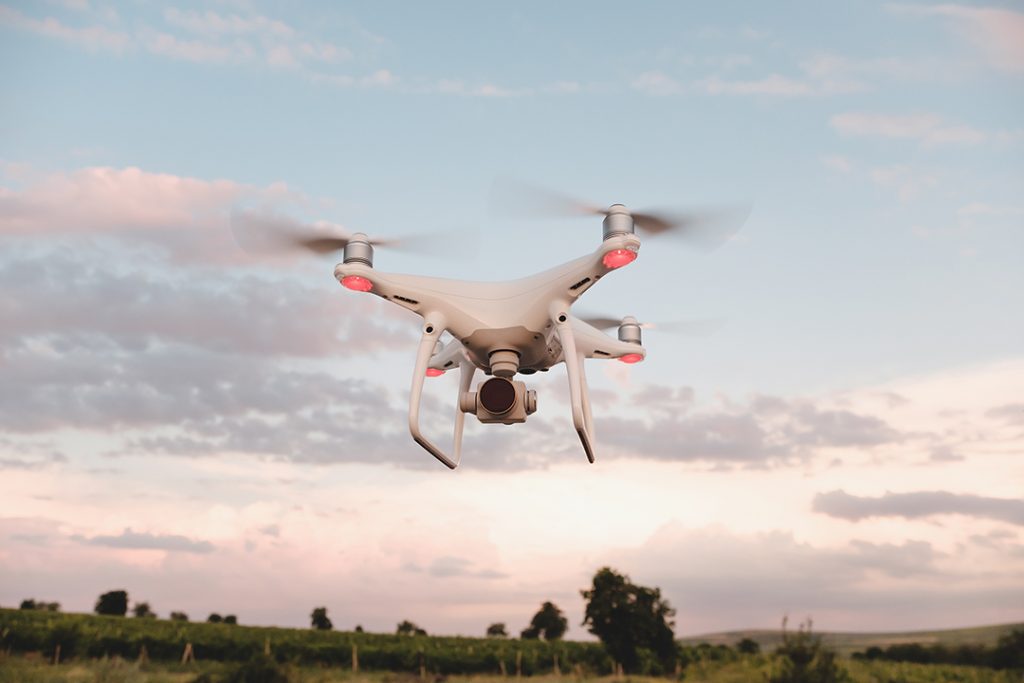
The enormous job of distributing pollen each year to the mass of fruit and nut trees in California’s agricultural empire may be lifted from the backs of millions of bees. Aerial drones are showing that they can help perform the task – and they don’t sting.
The flying platforms can be loaded with pollen and directed to rows of trees ready to receive it without wasting it on other trees, which can be efficiently pollinated in later flights. Bees not anxious to fly on gloomy late winter days need not feel pressured to perform.
The drones, often available for a dozen other farm chores at other times, can be hangared at night, protected from thieves who do a brisk business each year in stolen bee hives. Without the burden of being overworked, the bees and those who study and care for them can concentrate on their good health and consistent performance.
A report on the pollination performance of the wondrous flying drones was part of the editorial package of the November issue of the highly respected Western Fruit Grower. It detailed the pollenation progress over three years by a Syracuse, New York company called Dropcopter. It has used its hexacopters over three years to increase yields 25 to 50 percent in pollinating almonds, apples, cherries and pears.
Pollen is a commodity that can be purchased from suppliers, but many growers can gather more than they need to pollinate an entire orchard merely by shaking blossoms from a few of their own trees, collecting them for easy handling and eventual loading them on a drone for distribution. Timing is important of course, so shaking pollen-loaded supplier trees must be carefully calculated. Blossoms that remain on the supplier trees develop fruit, allowing them to be among producers at harvest time. When mechanical shaking of the blossoms is not an option they can be removed by hand before they are open, and the pollen extracted.
The Western Fruit Grower article indicates that Dropcopter has been using hexacopters in trial applications for three years, some of them in California. The trials have been limited to almond, apple, cherry and pear trees, and have increased yields by 25 to 50 percent. The company uses a patented distributor that allows the pollen to be spread at specific rates across a defined swath.
Fruit distribution and crop load on the trees can be controlled(limited) by the carefully scheduled drone applications. Bees, on the other hand, continue their distribution efforts as long as blossoms remain, often leading to overloaded trees, subject to heavy thinning costs after fruit develops.
Pollen-loaded drones are limited by weather extremes, but they can fly in less than ideal weather, probably the rule rather than the exception in most California Februarys. Often they can operate on some of those cool, damp days that cause most of the bees to sleep in..
In most of the tree crops where the drones have operated, pruning has leveled the trees to a consistent height, but that is not usually the condition of the average almond orchard, making control of the drones more critical. On the other hand, bees don’t seem to care how high or low they have to fly in their pollen-collecting episodes.
Hopefully, the bees will not be offended by this technological attempt to maximize their effectiveness. After all, the drones have not been programmed to make honey.








